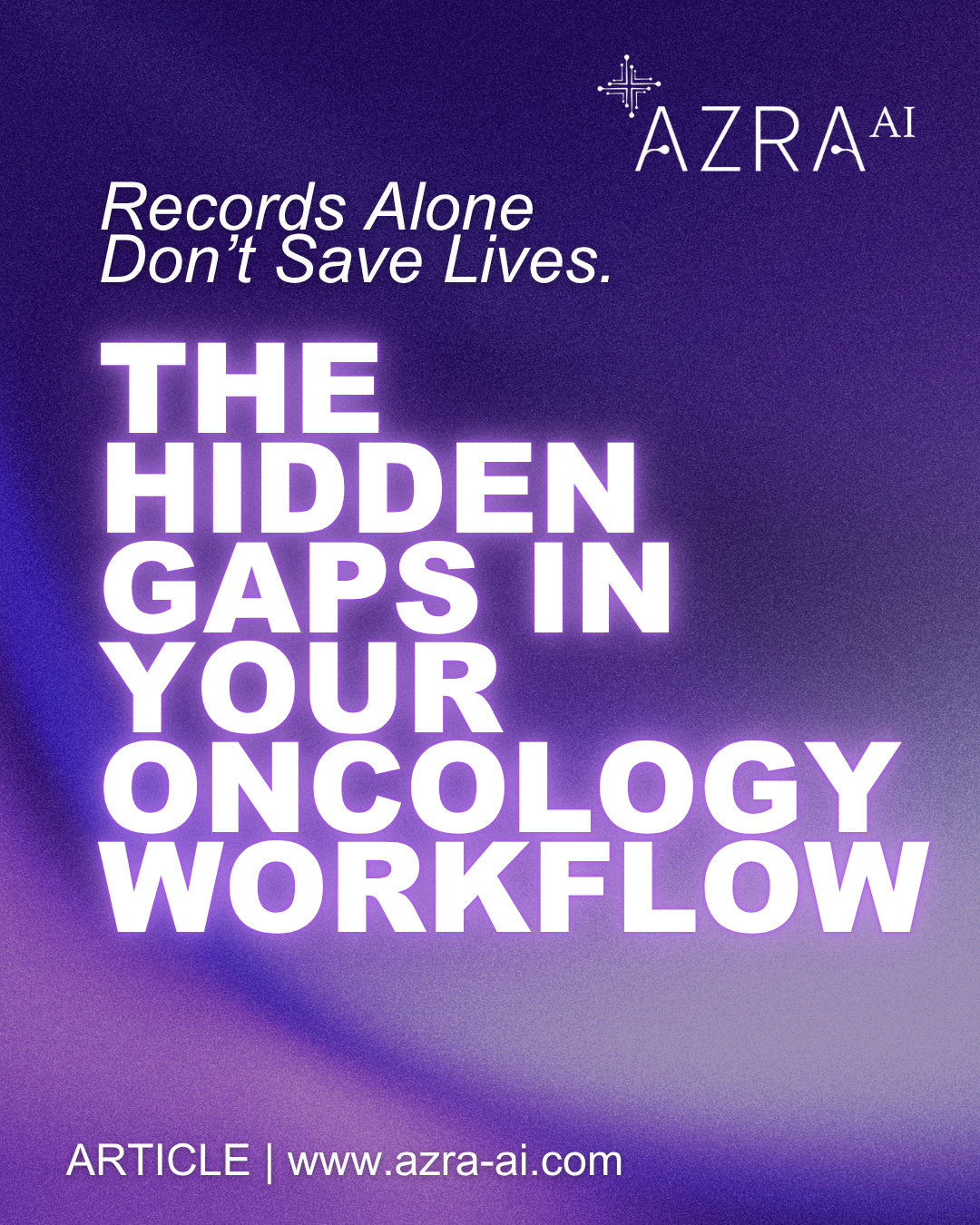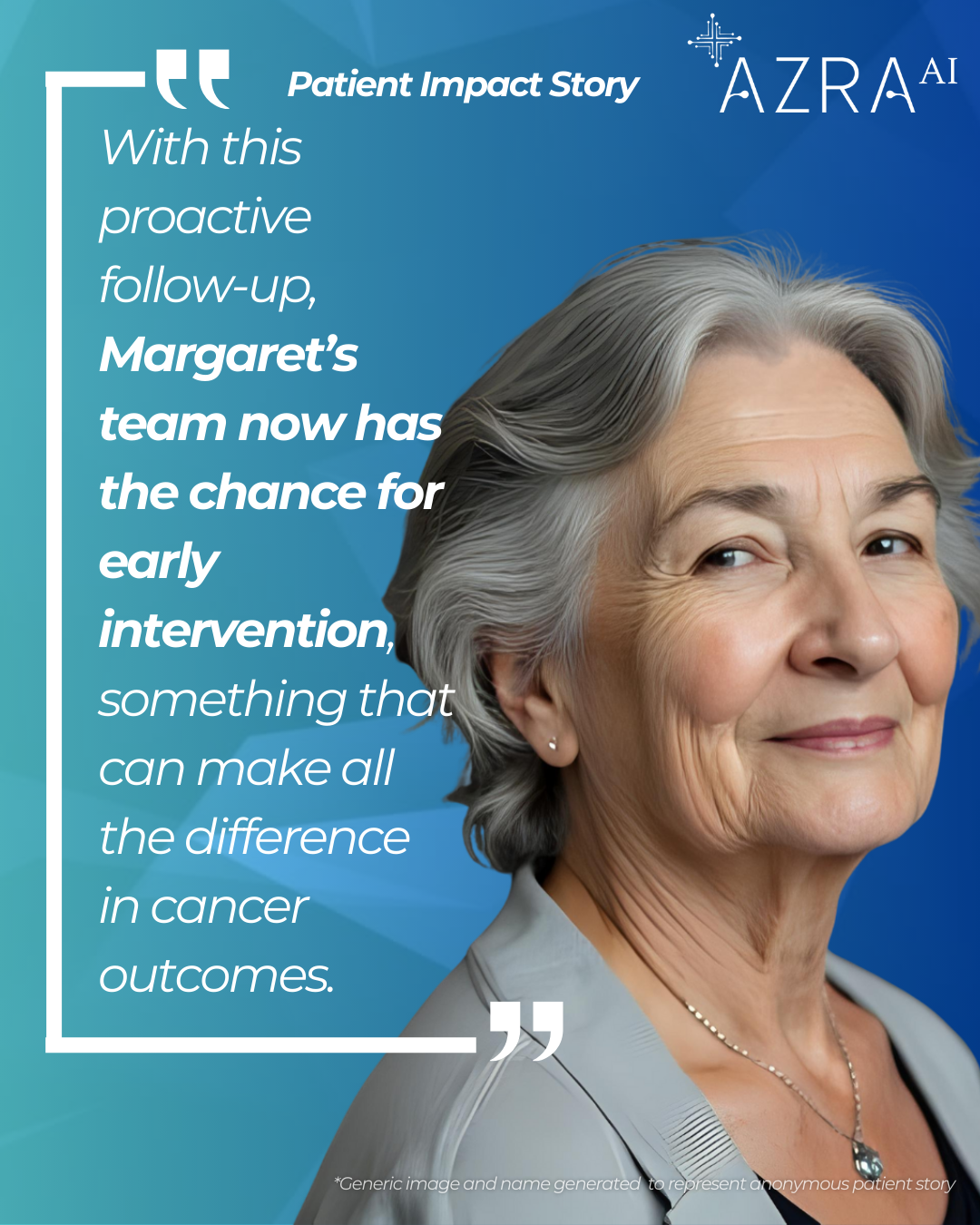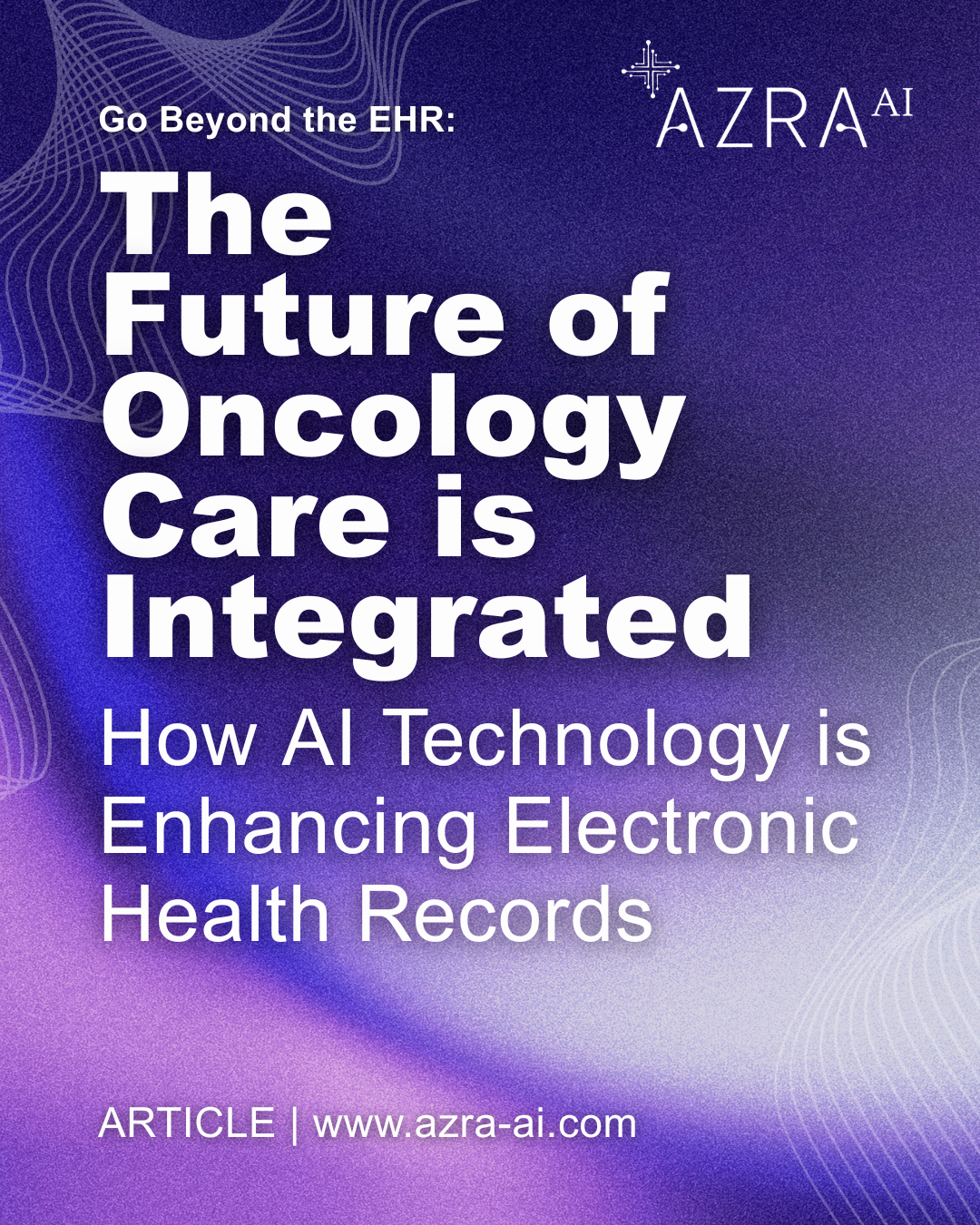Electronic health record (EHR) systems like Epic, Cerner, and MEDITECH have transformed healthcare by centralizing patient data and streamlining documentation. Yet when it comes to oncology care, even the most robust EHRs have blind spots—blind spots that can mean the difference between catching cancer early or missing it entirely.
Your EHR excels at managing data. But can it identify at-risk patients buried in thousands of pathology reports? Can it prevent patients from slipping through coordination gaps? Can it accelerate time-to-treatment when every day matters?
The Reality: Gaps Still Exist—And They’re Costly
Even with the best EHR systems in place, critical workflow gaps persist across oncology programs nationwide. These inefficiencies aren’t just operational—they directly affect patient outcomes.
1. Delayed Detection
Every day, hospitals generate thousands of radiology and pathology reports. Many include findings that could signal cancer—but these findings often go unseen for days or even weeks due to manual review processes and competing clinical priorities.
2. Patient Leakage
Between 15% and 30% of cancer patients never complete their care journey. They get lost somewhere between diagnosis, referral, and treatment—often due to communication breakdowns and disconnected workflows between departments or facilities.
3. Manual Inefficiencies
Oncology navigators and registry teams spend 60+ hours each week on manual chart reviews and case-finding efforts. This time-consuming process delays intervention and drains staff resources that could otherwise be focused on direct patient care.
4. Treatment Delays
When findings sit unreviewed and patients fall through the cracks, treatment initiation often occurs well beyond optimal care windows—impacting survival rates and quality of life. These challenges highlight a truth many healthcare leaders already know: your EHR isn’t built to manage oncology complexity alone.
How Azra AI Bridges the Gap
Azra AI’s end-to-end platform is purpose-built to address what EHRs cannot. Our solution works alongside your existing system to identify, surface, and route oncology cases in real time without adding administrative burden or disrupting established workflows.
✓ Real-Time Patient Identification
Azra AI automatically scans every pathology and radiology report to identify cancer diagnoses, suspicious incidental findings and high-risk screenings, often within hours of report finalization. This automation ensures no patient is overlooked.
✓ Streamlined Care Coordination
When a report indicates a potential cancer case, Azra AI immediately triggers the appropriate workflows to alert navigators and so care teams can connect patients to the right oncology specialists. The result: faster intervention and fewer coordination delays.
✓ Comprehensive Journey Management
From detection through survivorship, Azra AI tracks each patient across their entire care pathway, ensuring continuous follow-up and preventing leakage to competing health systems.
✓ Enhanced EHR Intelligence
Azra AI doesn’t replace your EHR, it enhances it. By transforming existing data into actionable oncology insights, Azra AI helps health systems make better clinical decisions, improve patient outcomes, boost operational efficiency, and strengthen financial sustainability.
The Bottom Line – Records Alone Don’t Save Lives.
Your EHR may manage the foundational data, but Azra AI transforms that data into critical insights, driving action that saves lives.
By pairing your existing systems with AI-powered oncology intelligence, your health system can ensure that every patient receives timely, coordinated, and life-saving care.
Ready to eliminate workflow gaps and enhance patient outcomes?
Schedule a demo today to discover how Azra AI complements your EHR to deliver real-time oncology precision.


.png)

